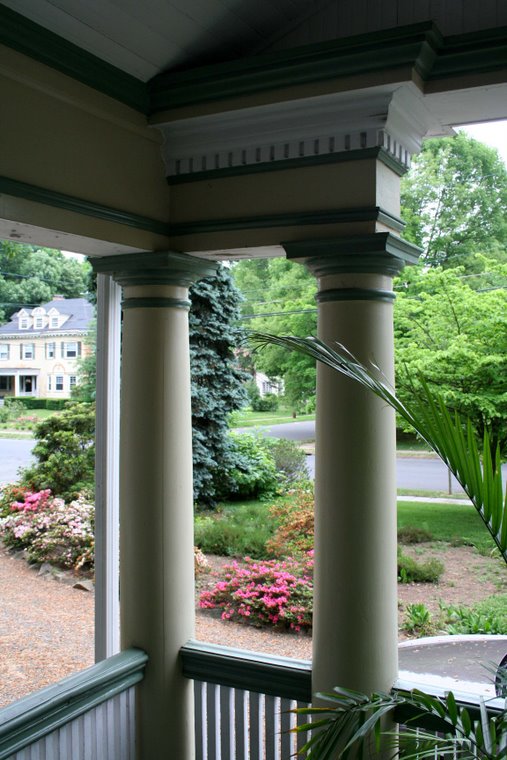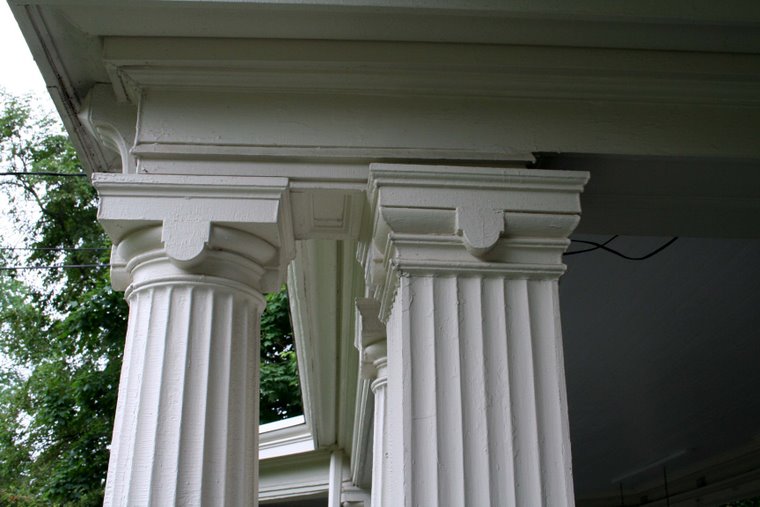On July 26, 2007, Union Countiy's Judge Barisonek ruled in our favor in the case brought to challenge Board of Adjustment approval of the the expansion of the Abbott Manor Nursing home. The judge gave a 1 hour and 40 minute oral decision in which he thoroughly went over the issues brought out in the transcripts of the hearings. It was obvious that he read the transcripts cover to cover. He quoted numerous statements by the expert witnesses of both sides, citing page numbers, as well as quoting from both the 2002 and 2005 Board of Adjustment’s resolutions. The Board of Adjustment's 2002 denial of the nursing home expansion will be reinstated.
Excerpts of Bill Michelson’s Summary of Judge Barisonek’s Decision
In evaluating the impact which the project would have on the historic district, I think two things influenced the Judge greatly. One is that he examined the model which showed clearly how massive it would be, as compared with surrounding properties. The other is that the other intrusions into the district (notably the 1950s-style apartments across the street), including the old Abbott Manor addition, all pre-dated the creation of the district in 1982.
The Judge believes that the Board was so overwhelmed by the federal court settlement, and Rother's threat of further litigation, that it simply lost sight of all the proper criteria for deciding the case. He blamed part of this expressly on Rother's planner, Peter Steck, who… told the Board what its obligations to the handicapped supposedly were, under the Fair Housing Act Amendments of 1988. This is because he found Mr. Steck's analysis to be utterly wrong. He therefore adopted my most basic complaint, which was that the 2005 Board members seemed to think that rejecting the project was simply not an option allowed to them, and that they had contorted their reasoning to reach an approval.
Turning then to the FHAA test under Lapid-Laurel, he found that the statute does not give the handicapped in nursing homes a right to live at a particular location, but to be able to live somewhere in town. Since Plainfield allows nursing homes and assisted living in several other zones, he found it preposterous that they should insist on a particular location that presents real problems. He found false Rother's statement that no other site in town was available, and seemed angry at it. I believe he agreed with me that the 2005 Board's citation to Hovsons but not Lapid-Laurel (those who have followed this will understand) was nothing short of intellectually dishonest. He agreed with me also that the whole point of Lapid-Laurel is that the FHAA does not trump state and local zoning law, but should be viewed in harmony with it.
The parallel issue in state zoning law is called "inherently beneficial use", and the case everyone cites is Sica. He went our way on the most basic legal point I have advanced: that since we now have historic preservation laws, being in a historic district becomes one of the "negative criteria" for applications like this, and a very big one at that. In other words, for the first time, a New Jersey court has declared the validity and importance of historic districts, and described what their effect should be on land-use applications. He even said that letting this project in would cause a "domino effect" that has to be prohibited, and stated that the Board was wrong to give so little heed to the three reports from the Historic Preservation Commission, which advised solidly against the project even as improved. In fact, the Judge went further than I did on one point: that an "inherently beneficial" use may cease to be so, at the wrong location. He therefore suggested that the Board need never have applied the four-prong Sica test or the two-part Lapid-Laurel test, as it could have ruled at the outset that the project was completely unacceptable at this location. In fact, he summed up by saying that, aside from the desirability of nursing homes, every piece of evidence and piece of testimony in the whole case was negative to CPR's application. He will enter an Order vacating the 2005 Resolution, which will have the effect of reinstating the one from 2002.













